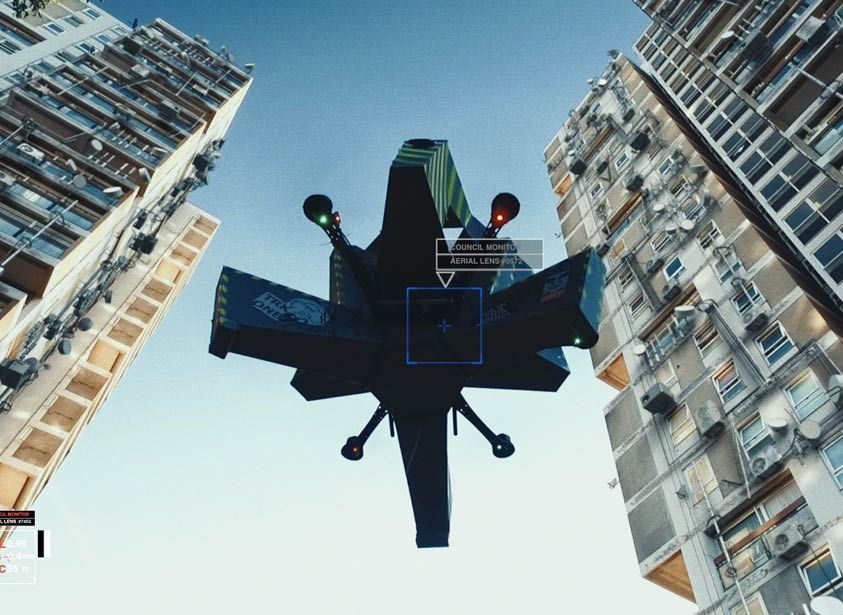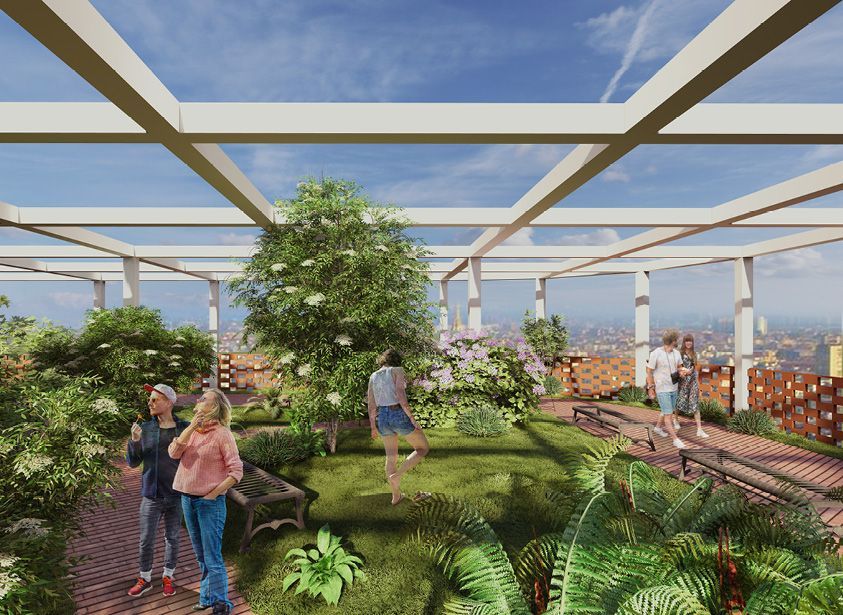Liam Young: imagining New Planetary Futures

Domus Academy talk with Designer and Filmmaker Liam Young, moderated by Giovanni Caruso, Head of the Design School, and Maite Garcia Sanchis, Course Leader of the Master in Urban Vision & Architectural Design, explored the power of storytelling, speculative design, and planetary-scale imaginaries as tools to rethink our collective future. Read more about it!

Fiction as a Tool for Understanding Reality
Liam Young described his practice as the creation of “imaginary worlds”—spaces where art, film, and design intersect. Whether exhibited in major institutions like MoMA or developed for Hollywood productions, these fictional cities and landscapes allow us to reflect critically on the world we inhabit. For Young, fiction is not escapism but a shared cultural language that shapes how we imagine tomorrow.
Planetary Scale Challenges
The central theme of the talk was Young’s concept of “new planetary imaginaries.” Drawing on projects such as Planet City, he invited students to consider how design can respond to the ecological and social challenges of the Polycrisis—climate change, resource extraction, and global inequality.
Young argued that all cities are fictions, shaped as much by stories and narratives as by physical infrastructures. Today, our world already functions as a planetary city, stitched together by logistics, supply chains, and extractive industries.

From Cyberpunk to Planetary Punk
In dialogue with the audience, Young introduced the idea of “Planetary Punk,” a new genre of speculative design. Unlike cyberpunk or solarpunk, which emerged from specific cultural anxieties, planetary punk addresses global crises that transcend borders.
It asks: how can we imagine collective infrastructures, economies, and governance systems on a planetary scale? And how can fiction help us prototype radical but pragmatic futures?
Designing Counter-Narratives
Young described his process of world-building as design research: collaborating with scientists, starting with existing technologies and extrapolating them into speculative futures.
‘I look at existing technologies, I connect with scientists and essentially my role as a world builder is visualising those scientific papers that might be locked away in peer reviewed journals or hidden in academic conferences, and try and find ways to create compelling imagery around them to connect people to the science.’
Sometimes these projects take the form of cautionary tales, complicating optimistic narratives of technological progress. At other times, they propose alternative visions of hope, rooted in sacrifice and collective action. As Young noted:
‘Climate change is no longer a technological problem but cultural and political problems—it is a crisis of imagination.’
From Pocket to Planet: The Role of Designers as World Builders
For the Domus Academy community, the talk was a call to action. Young challenged students and faculty to think beyond the scale of the site or product, and to design with full awareness of planetary systems.
‘When you specify a particular material at the scale of the building you’re setting in motion a supply chain that may have consequences across the other side of the Earth. If you know when you’re making decisions at the scale of the products, the choice of fabrication method for a shoe or the type of metal chosen for the back of an iPhone, these aren’t just decisions you’re making of the scheduled products. Product design and Landscape design have collapsed together and now when you when you specify something of the scale of an iPhone, the scale of our pocket, it has consequences for a village on the other side of the world in the Congo. And for me world building as a design, it means that you design for those planetary systems, and maybe you make a decision at the scale of the pocket, not because of how it fits into that pocket or fits in your hand, but because of what it does across the other side of the planet.’
Every material choice, every technology, every architectural gesture is embedded in global flows of resources and labour. To be a designer today means to be a world builder—someone capable of envisioning and shaping futures that are not only local but planetary.
‘I hope that everyone in the room would take on the idea of being a world builder. Because for designers, I think, world building means thinking about the world that the things we’re designing sits within and, ultimately, the world that the things we’re designing sets in motion. By that I mean that nothing exists on a single site. And for me world building as a design, it means that you design for those planetary systems, and maybe you make a decision at the scale of the pocket. Not because of how it fits into that pocket or fits in your hand, but because of what it does across the other side of the planet.’
A Shared Project of Hope
Despite acknowledging the dystopian realities of the present, Young urged participants to find optimism in the act of imagining. Fiction, he argued, can help us visualise planetary-scale solutions, from carbon removal infrastructures to new cultural rituals of coexistence. As he concluded:
‘I think just being mindful of the full life cycle and the full set of relationships that govern the things that we make, in institutions like yours, so again, like taking on that challenge, I think is a really hopeful thing to do.’





